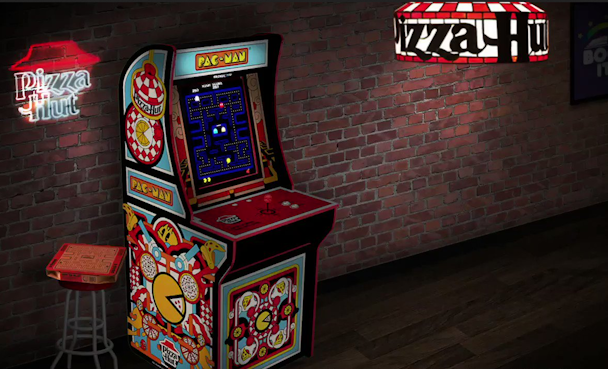What advertising can learn from the world of gaming
As part of The Drum‘s deep-dive into all things gaming, Verizon Media‘s Josh Partridge tells us why brands should consider gamifiying their ads – and how they can go about doing so.

With the rise of interactive formats in all forms of entertainment – from Netflix‘s decision-led Black Mirror episode Bandersnatch, to try-on-at-home AR experiences in retail and VR films that put you ‘in the movie‘ – the lines between traditional ‘lean-back‘ linear entertainment and ‘gaming‘ (as in an interactive experience you control through a story) are blurring.
For advertisers considering a gaming strategy, you’ve got to look further afield to being in or next to games. That‘s on top of options within in-game OOH (or is that ‘out of world‘ ads?); Xbox video and landing experiences to reach millions of people on the big screen; in-menu ads with mobile gamers; and sponsorship in esports tournaments.
While gaming contexts cannot be ignored as a fantastic way to reach those audiences, there is a way to bring your brand to an even wider audience that has a penchant for interactive, engaging experiences outside of a pure ‘gaming’ context: gamification.
No, this doesn’t mean designing and creating entire new games and trying to publish them. It’s simply a way to bring the gaming experience into everyday formats and contexts that entice people to interact with your brand, offering them a richer and deeper interactive element to what would normally be a passive, viewing-only experience.
Here are a few hints and tips we’ve learned from our recent experiences of taking the gaming experience beyond the world of gaming:
-
Make it interactive, not passive: simple interactive mechanics are easy and effective wins to move on or complete an audience’s experience with your brand. Mechanics like branching video can provide an interactive challenge, ie picking the right path in order to complete the experience. If it’s interesting, enticing and has a clear reward (with either a promotional or competition element) then people will want to take part. (Resident Evil 2 trialed this on YouTube)
-
Introduce some competition: it doesn’t take much to make media more fun and engaging using techniques often seen in games; you can reward users for engagement with a prize opportunity or the ability to compete with others. We recently organized an international treasure hunt using blockchain technology to challenge people to search out and find digital packs of Doritos in order to win a Playstation 5 and other prizes, like redeeming packs instantly in-store.
-
Bring 3D, interactive ads to life in 2D environments to cut through: by using webAR formats, you can utilize what would be flat, 2D visuals to bring augmented reality experiences at scale via web browsers, instead of relying on apps and QR codes to bring them to life. From simple product placements to interactive characters, this simple upgrade can provide a far more engaging connection to consumers than just asking them to watch your video. (Pizza Hut raised PacMan on its packaging this way)
-
Get immersive: through live events such as concerts, sports games and tournaments, or even retail environments, you can enhance a physical experience by layering on digital experiences, or bringing people together in a digital world to interact with your brand directly. Find the way your brand can enhance the overall experience that consumers would normally get. You might provide the half-time entertainment through group gamified AR experiences in a sports stadium, as the NFL did with its Ultra Toss game that challenged the crowd to land their ball in the back of an AR truck that appeared to be on the pitch and win prizes. Or creating a virtual fashion experience – like The Fabric of Reality, which we produced with the Fashion Innovation Agency at London College of Fashion and the Museum of Other Realities. The virtual world allowed designers to create pieces without any physical constraints to showcase their creativity in entirely new ways.
Connectivity and device adoption (especially around VR) has traditionally been seen as a barrier to these kinds of immersive experiences. But as 5G proliferates and we see new AR/VR devices that are smaller and less expensive, appetite for these kinds of interactive, immersive events are only going to snowball.
Recent research we conducted around consumer appetite for this kind of experiences found that 69% of UK consumers are excited about VR and AR, with 66% saying they now expect their digital experiences and interactions with brands to be seamless, innovative and enhance their real-world. So it’s essential brands think differently about their digital strategies and employ new and interesting ways to engage with their audiences, to keep them entertained and inspired, as well as to educate and inform them about a brand’s products and services.
Scaling webAR ad formats across the internet on browsers as well as in-app means you can gamify your ads at scale across the open internet. Plus we can reach audiences across Xbox and all major in-game ad providers to bring your ads direct to gaming audiences.
So if you want a fully rounded gaming strategy, get gamifying your ads. Experiment, be relevant and enhance rather than interrupt people’s real-world and digital experiences. Do that and people are much more likely to appreciate and engage with your efforts. Let the games begin.
Josh Partridge is the managing director and co-head of EMEA at Verizon Media.
